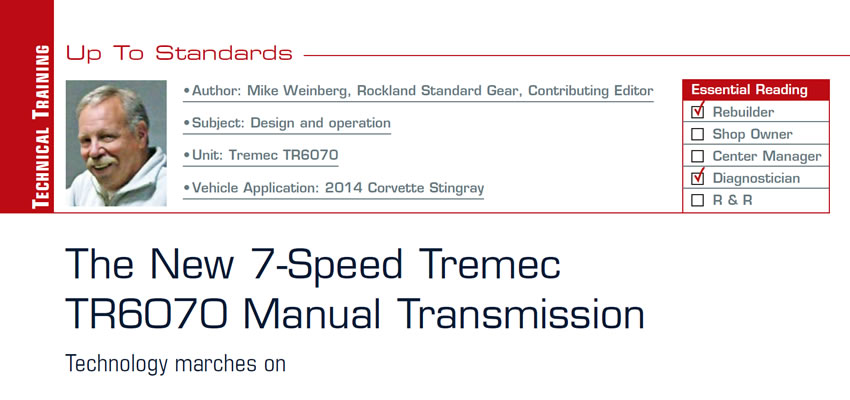The Wild and Wonderful World of Warranty
In the auto-repair industry it is customary to warrant the product we provide to the customer for a period of time and mileage. A warranty is defined as a promise to the customer of a level of performance for the product they are buying to ensure that for a specified period any problems or failure of the product will be repaired or replaced at no expense to the customer. This sounds like a fairly simple issue, but it is anything but in the United States of Litigation.

Bearing Service – the Key to Reliability
All forms of transmissions, transfer cases and differentials use anti-friction bearings to support moving components, reduce parasitic power losses and maintain the parts in their correct positions for long-term reliability. The most-common bearings we see in manual transmissions, transfer cases and differentials fall into several categories of design. Each type will have different design criteria as for operational speed and the ability to handle axial (thrust) and radial loads.

Trucks Aren’t the only Vehicles with 4-Wheel Drive
In this article we look at the BorgWarner 4476 and 4479 transfer cases, which are all-wheel-drive units. All-wheel drive signifies that the car has the ability to send power to all four wheels all the time with no driver controls. These transfer cases are essentially the same unit with some subtle differences and are found in the Cadillac SRX models. In 2004 all SRX models were equipped with the BW 4476. In 2005 this model was equipped with both the 4476 and 4479, and from 2006 through 2009 all were equipped with 4479 units.
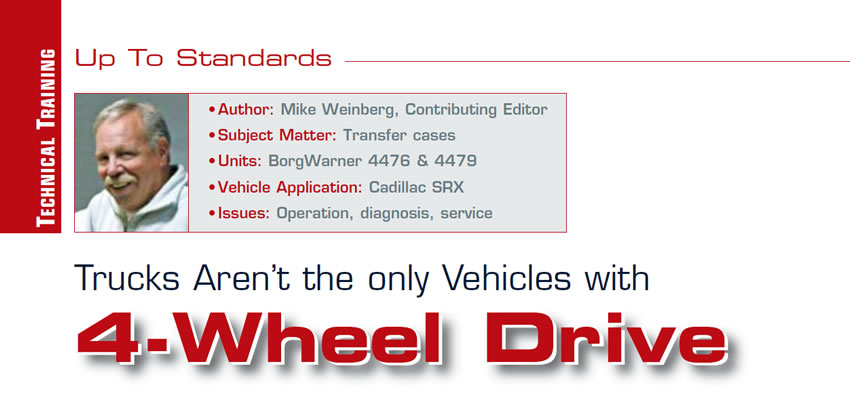
The Numbers Don’t Jibe
For whatever reason, the tech lines get an inordinate number of calls regarding a few specific issues. That such a high volume of calls is generated by just a few problems leads to the belief that we need to revisit and speak about the lack of understanding by the technician that leads to all this wasted time and phone traffic, as well as failure to get the job right the first time. Let’s start out the year by getting to the nitty-gritty of why certain issues seem to confuse so many people.
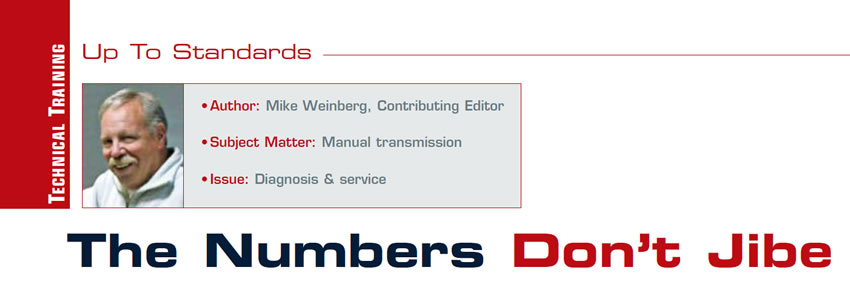
Year-End Review
Another year has flown by, and it has left me with more questions than answers. Business is slowly increasing for us, but it seems that many shops in our industry are struggling to survive. This means that the transmission repair industry is still contracting, with many shops pulling the plug and others doing general repair to bring in cash flow – and general-repair shops now buying reman units and replacing transmissions.

If You Don’t Know How It Works, How Can You Work on It?
Manual transmissions – whether three-speed or 16-speed units, rear- or front-wheel-drive – all work the same way. To be usable, the engine’s torque must be broken down into manageable steps or speeds. The result is a set of gear ratios allowing the vehicle to go from a dead stop to road speeds fuel-efficiently. The first-gear ratio will be high enough numerically to move the vehicle’s weight from stop to go. The next sets of gears will have descending numerical ratios to increase vehicle speeds smoothly while increasing fuel efficiency.
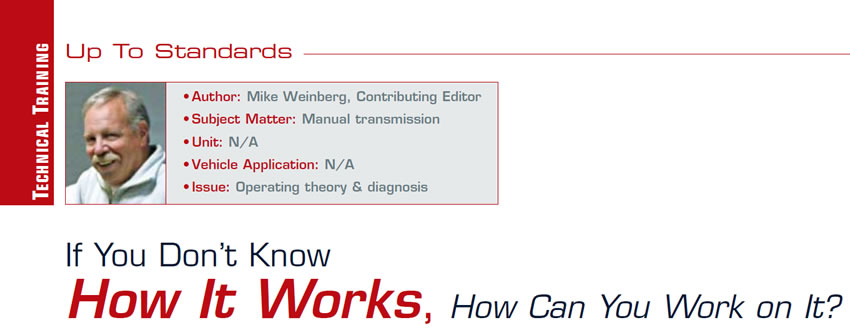
Self-Examination in the Great Recession
Many factors have reduced the number of vehicles we have to work on, resulting in a two-thirds reduction in the number of dedicated transmission shops nationally. The automakers have created lower leasing costs and longer vehicle warranties, which keep a large number of vehicles from needing our services. Government programs such as “Cash for Clunkers,” which was basically a gift to the automakers, removed about 750,000 vehicles from the market that we deal with. The improvements in manufacturing quality and design have produced vehicles across the spectrum that last longer and require less service.

Simple Issues Turn into Nasty Problems
The same goes for manual transmissions, as the OEM will specify a fluid to match the friction coefficient of the synchronizer material. Brass or bronze rings have faded away in most late-model stick transmissions, replaced by sintered metal, paper or carbon-fiber linings, or hybrid combinations of any of the types of linings. Using an oil other than the one specified will create notchy, dragging or blocked-out shifts. This is also true for the axle assemblies, as more of these units are using limited-slip differentials to provide power to both drive wheels. Incorrect lubricants or additives will cause clutch chatter on turns and shorten the life of the friction material because of overheating from slippage.
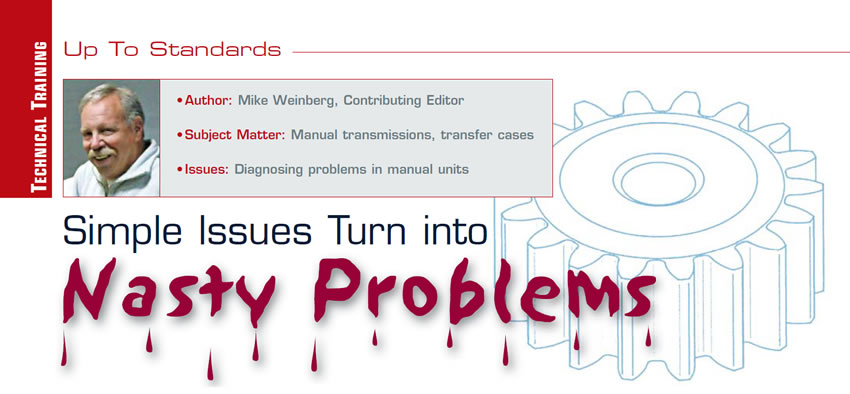
Metallurgy + the Laws of Physics = Buyer Beware
The car sat on the lot for about a month, until a salesman noticed a collection of white/gray powder under the middle of the vehicle. Curious as to what was going on the salesman went to move the Hummer, put it in gear and promptly blew the rear driveshaft out of the vehicle. They then removed the BW 4484 transfer case from the vehicle. By looking at the photos provided here, you can see what happens when a transfer case with a magnesium case is filled with seawater for more than a month. The case is now paper thin and riddled with holes as if attacked by metal-eating moths. The used-car lot bought a new BW 4484 and fixed the problem. The core was sent to us, and it makes a good basis for this article.

The New Cadillac 6-Speed
In the never-ending competition between automakers for increased sales, there is an endless supply of new models equipped with newly designed components. Cadillac has produced the new ATS model, which is described as a “luxury compact sports sedan.” The ATS early on became the darling of the motor press and received “2013 Car of the Year” and other awards.
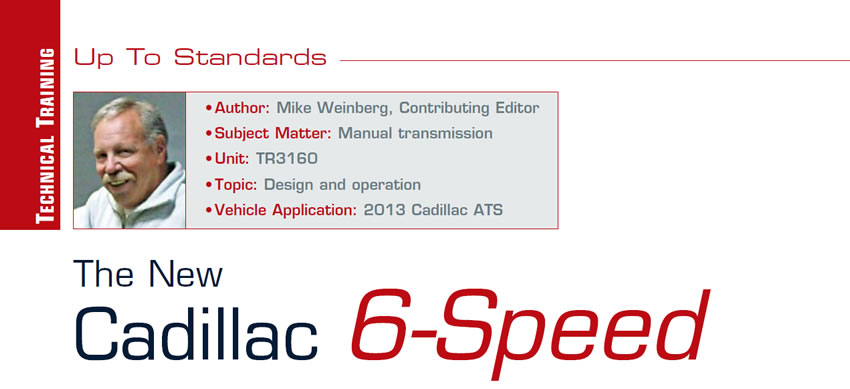
Inside the Tremec TR6070 7-Speed Manual Transmission
Last month we looked at the new C7 generation of Chevrolet Corvette, which brings the famous “Stingray” name back into use. GM has invested tremendous amounts of labor and capital to create a real world-class new model, which will be the first to use the new Tremec TR6070 seven-speed manual transmission. The new Stingray’s advanced computer controls will enable the driver to tune the vehicle to a number of driving modes, and Tremec did a really first-class design to provide seven speeds in a package that is only slightly different in size from the previous TR6060.
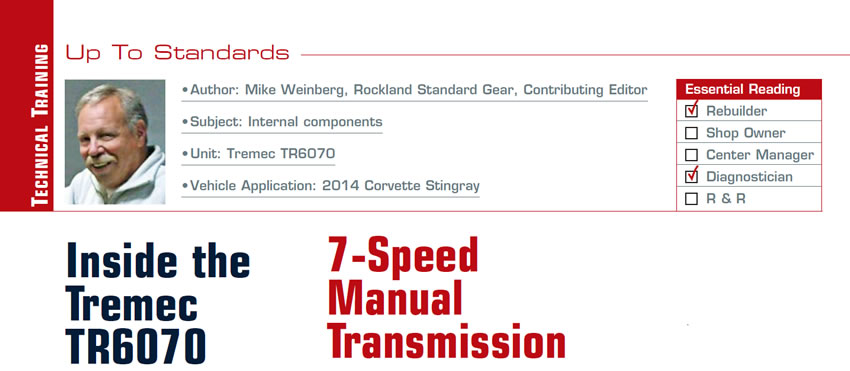
The New 7-Speed Tremec TR6070 Manual Transmission
This is truly a world-class vehicle. It features new technology, design and manufacturing methods that go way beyond the familiar C5 and C6 Corvettes. These cars have come a long way from the older fiberglass models, using an aluminum space frame and many carbon-fiber body parts. GM has invested a fortune in development and design in a totally new LT1 aluminum-block engine (Figure 3) that produces 450 horsepower and 450 lb.-ft. of torque from the 6.2-liter displacement. Zero-to-60-mph times are in the four-second range, and this is from the stock motor. Higher-performance versions of the new LT1 will be released for the top-of-the-line Corvette models. The most-striking feature of these vehicles is a seven-speed manual transmission, the TR6070 (figures 4 and 5).
